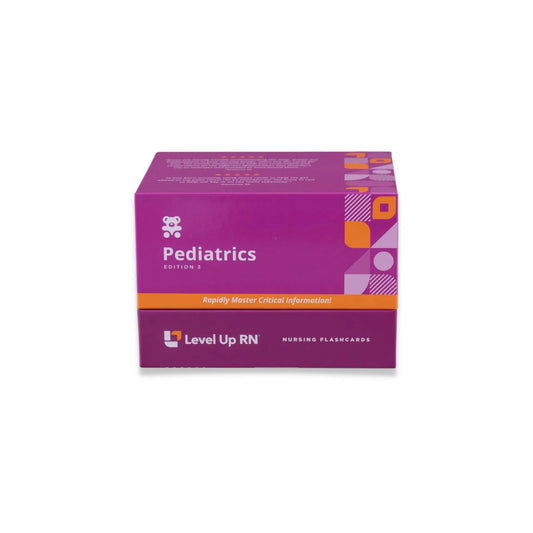Peds, part 44: Musculoskeletal Disorders - Osteogenesis Imperfecta & Rickets
Updated: Cathy ParkesOsteogenesis Imperfecta and Rickets. The cause, signs and symptoms, diagnosis, and treatment of osteogenesis imperfecta. The cause, risk factors, signs and symptoms, labs, and treatment of Rickets.
Full Transcript: Peds, part 44: Musculoskeletal Disorders - Osteogenesis Imperfecta & Rickets
Full Transcript: Peds, part 44: Musculoskeletal Disorders - Osteogenesis Imperfecta & Rickets
Hi, I'm Cathy with Level Up RN. In this video, I will be discussing osteogenesis imperfecta as well as rickets. And at the end of the video, I'm going to give you guys a little quiz to test your knowledge of some of the key points I'll be covering, so definitely stay tuned for that. And if you have our Level Up RN pediatric nursing flashcards, definitely pull them out and pay close attention to the bold red text on these cards because those represent the most important facts that you are likely to get tested on in nursing school. Osteogenesis imperfecta is a genetic disorder that causes issues with the synthesis of collagen, which is essential for making bones hard. This leads to extremely brittle bones, which in turn, causes bone deformities and fractures. Other signs and symptoms of osteogenesis imperfecta include blue sclera, hearing loss, and short stature.
In terms of diagnosis, an X-ray, CT, MRI, and/or bone biopsy can be used. There is no cure for osteogenesis imperfecta, so treatment is supportive. Bisphosphonates such as alendronate can be used to strengthen bones and decrease the risk of fractures. Bracing and splinting may also be used, as well as surgical stabilization. And then children with OI will require physical therapy and occupational therapy and may also require assistive devices such as wheelchairs and walkers. And then it's always important to prevent fractures by handling the child gently at all times.
Moving on to rickets now. Rickets is a disorder that causes bone loss due to vitamin D deficiency. So as you probably know, calcium requires vitamin D to be absorbed. So without sufficient vitamin D, calcium is not being absorbed, and this impairs bone mineralization. Risk factors for rickets include insufficient sunlight exposure - and sunlight is a key source for vitamin D - insufficient dietary intake of vitamin D, and/or disorders that impair production or absorption of vitamin D such as celiac disease and cystic fibrosis. Signs and symptoms of rickets include bone deformities such as bow legs and knock knees, as well as bone pain and fractures. Labs will show an increase in alkaline phosphatase and a decrease in vitamin D. Treatment of rickets includes vitamin D supplementation, increased exposure to sunlight, and increased intake of vitamin D-rich foods such as fish and eggs.
All right, it's quiz time, and I've got three questions for you. Question number one, red sclera is a symptom of osteogenesis imperfecta. True or false? The answer is false. Blue sclera is a symptom of osteogenesis imperfecta. Question number two, rickets is caused by a deficiency in blank. The answer is vitamin D. Question number three, name three ways a patient with rickets can increase their levels of vitamin D. The answer is vitamin D supplementation, increased sunlight exposure, and increased intake of vitamin D-rich foods. All right, that is it for this video. I hope you found it to be helpful. Take care, and good luck with studying.


